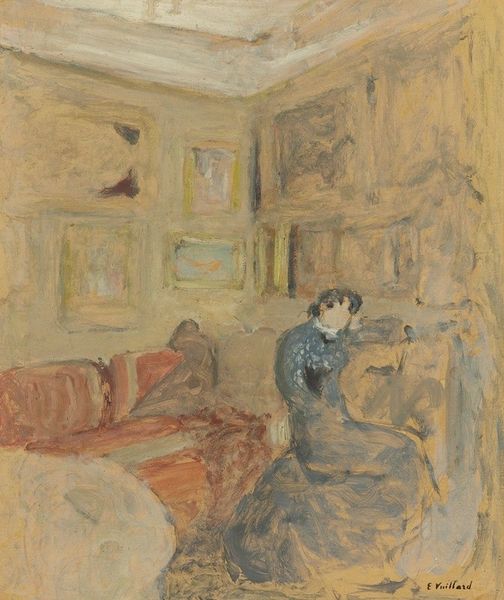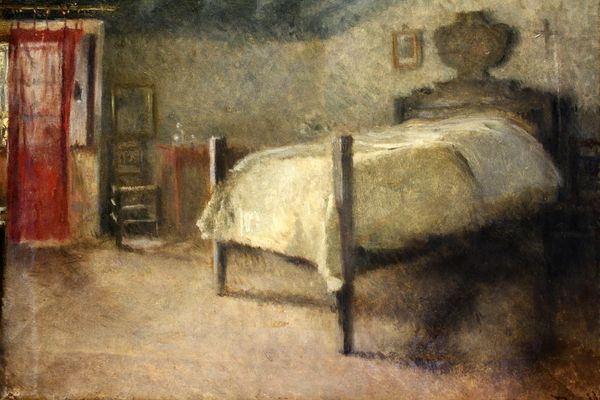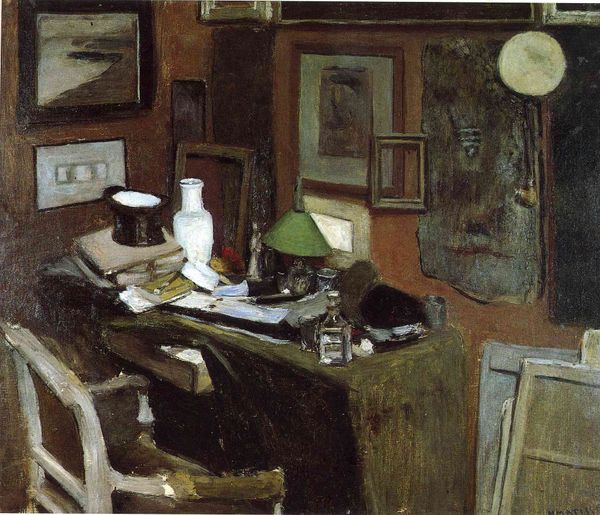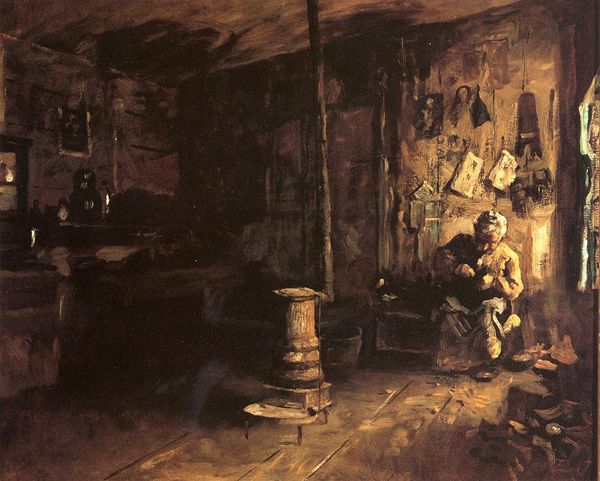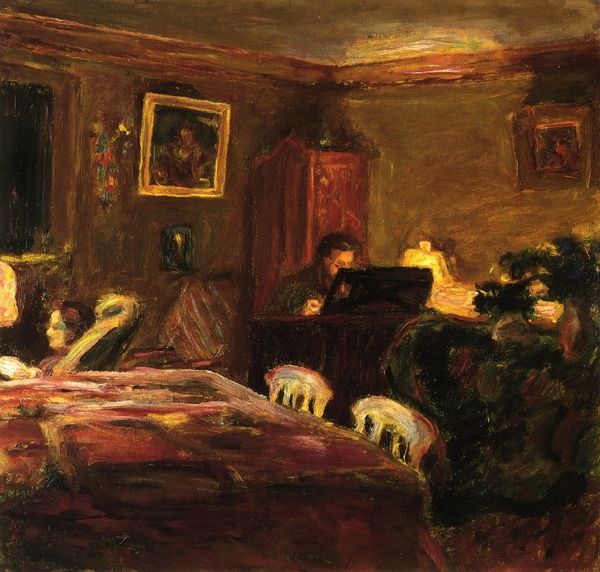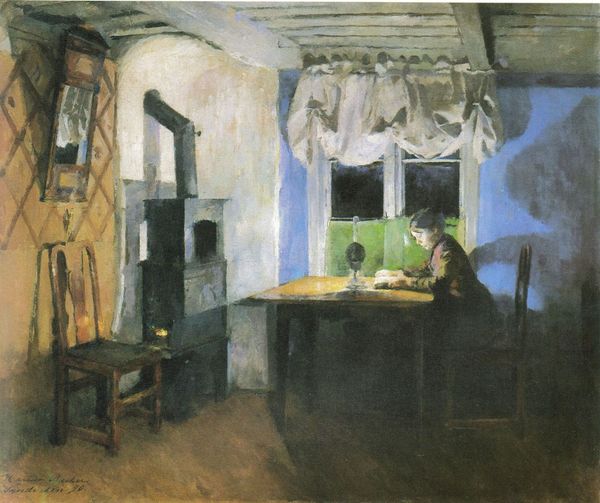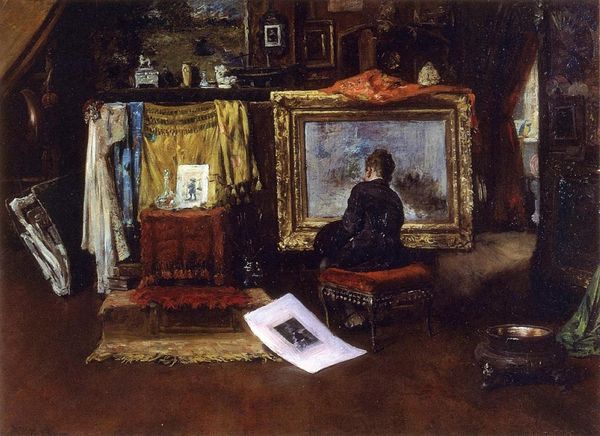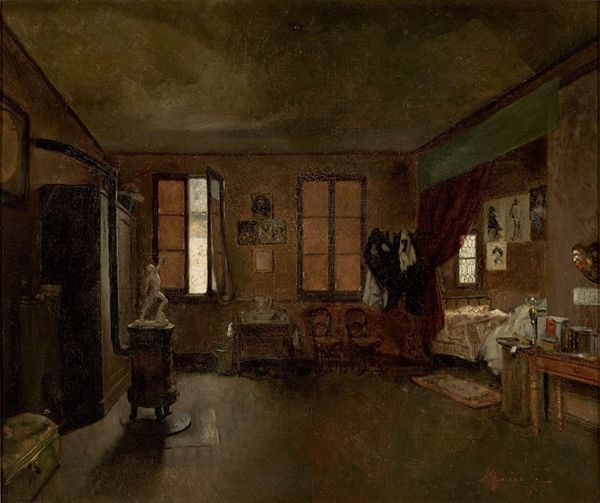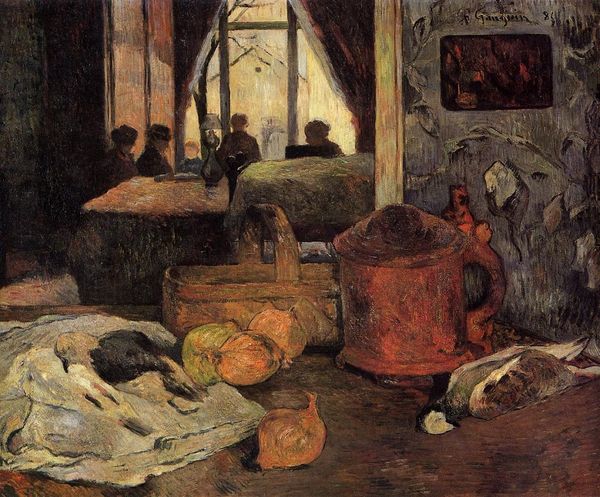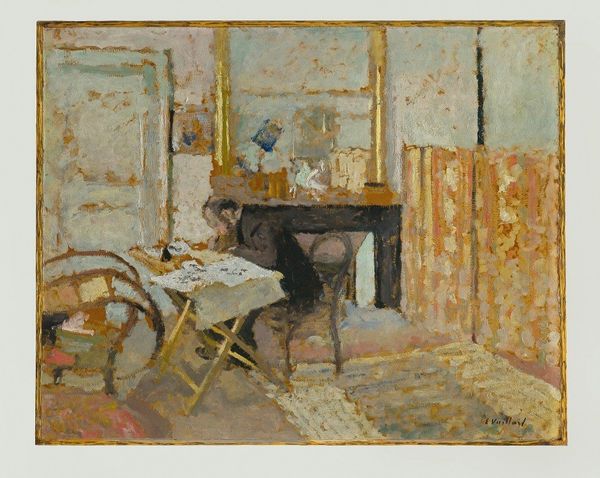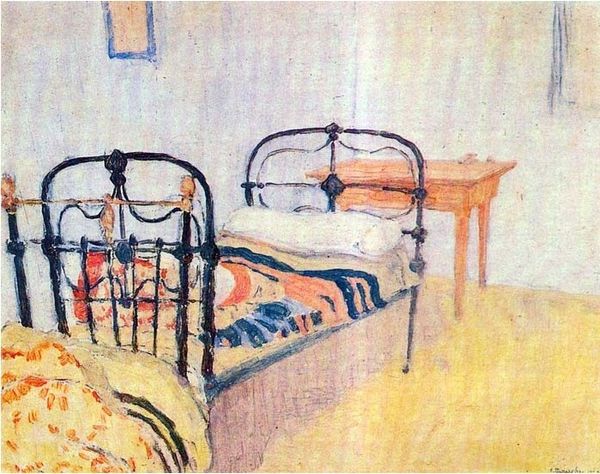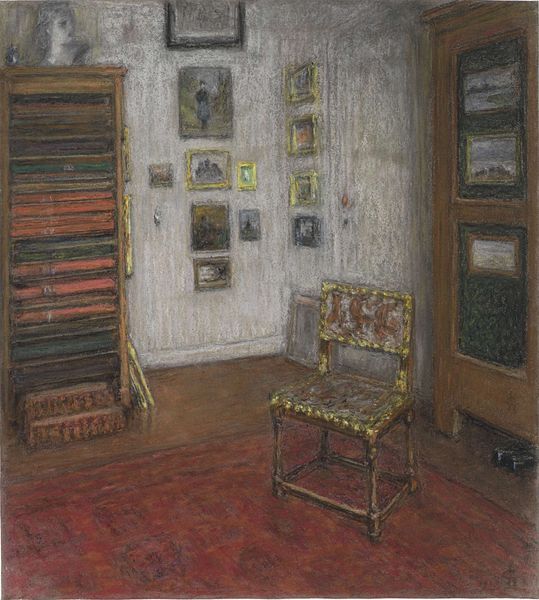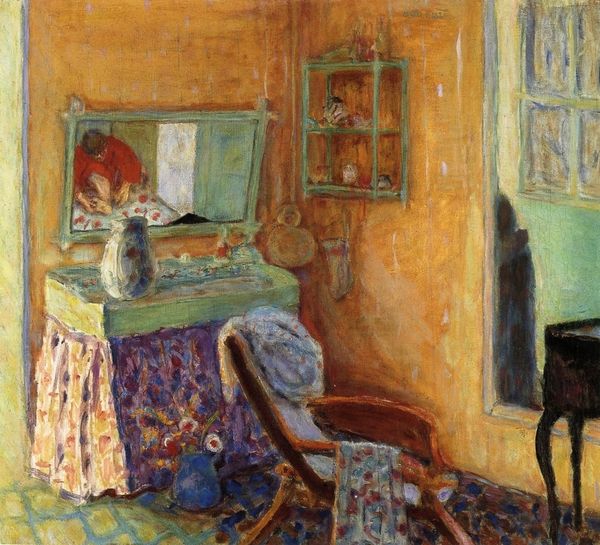
painting, oil-paint, impasto
#
portrait
#
painting
#
impressionism
#
oil-paint
#
oil painting
#
impasto
Copyright: Public domain
Curator: Maximilien Luce's painting from 1878, "The Artist's Room, Rue Lavin", shows a peek into a very private, interior space. Editor: It’s immediately striking—somber, almost claustrophobic. The impasto gives a thick, almost sculptural quality to the ordinary objects in the room. Curator: Exactly. Note how Luce employs impasto oil paints—he’s building up the texture and surface quality of each element, challenging notions of conventional portraiture by showcasing this interior rather than a figure. We also see impressionistic tendencies as it seems the work was made "in situ." Editor: The materiality definitely draws you in. But how do we understand the symbolism? Is it merely a depiction of lived-in space? Curator: The setting serves as a microcosm reflecting labor conditions and domestic environments that often go unseen in canonical depictions of Impressionist leisure. These details of everyday life provide insights into the social fabric woven between work, material, and the human condition. The rough, uneven surfaces reflect his interest in challenging dominant structures of artistic production itself. Editor: That's a strong point. But I'm still held by the stark, nearly monochromatic palette—the subdued light and the shadows. It evokes a certain kind of stillness and loneliness; even the texture almost feels…oppressive. How does the weight of these colors inform what the scene symbolizes for the artist? Curator: Interesting. To me, the restricted palette reflects economic restrictions placed upon workers in that time period. The limited tones, mirroring a life circumscribed by industrial labor, and this restriction highlights material realities, resonating across Europe. Editor: Your understanding of its societal value makes a lot of sense. It almost allows one to consider, who occupied this space, what did they produce, what sort of economic struggles were they under? Curator: Exactly, each element prompts further analysis to challenge capitalist consumerism by capturing a very specific sense of economic constraint that speaks volumes. Editor: Seeing it from this perspective certainly brings a newfound layer of meaning to these raw textures and somber hues. I appreciate Luce's social and artistic approach here. Curator: Precisely. I think the real triumph here is that it bridges the aesthetic and political into a truly comprehensive dialogue about living, making, and working.
Comments
No comments
Be the first to comment and join the conversation on the ultimate creative platform.
